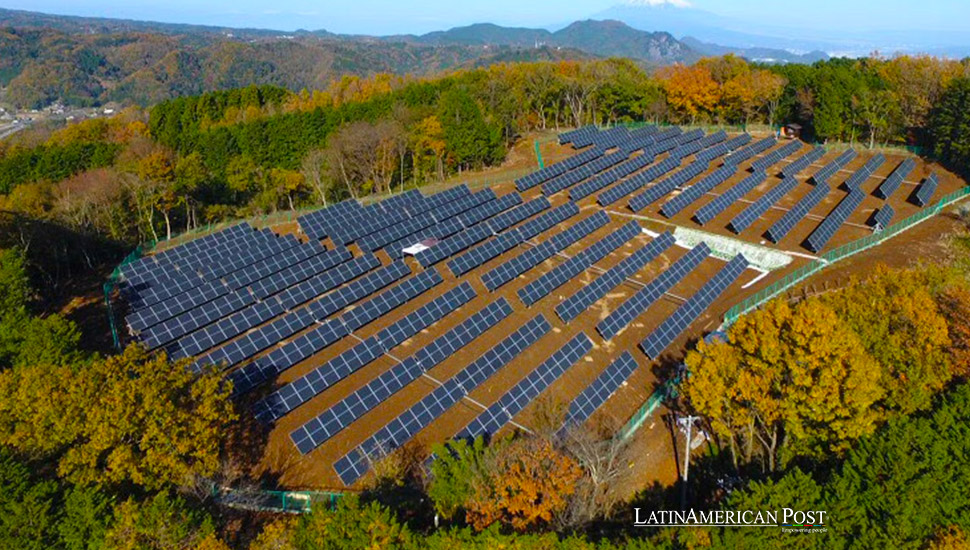Advancing Latin America through Big Science: The Greater Caribbean Light Source

The Greater Caribbean Light Source project could revolutionize Latin American scientific research and regional development. Victor M. Castaño, Pedro Fernández de Córdoba, and Galileo Violini, participants in the LAMISTAD project, emphasize the initiative’s transformative potential in a Nature Journal opinion piece.
In the quest for scientific progress and economic development, Latin America has long faced the challenge of accessing cutting-edge research infrastructure. The region’s researchers have often been disadvantaged, lacking the tools and facilities available in more developed countries. However, the Greater Caribbean Light Source (GCLS) project, an initiative under the Latin American International Synchrotron for Technology, Analysis, and Development (LAMISTAD), aims to change that by bringing advanced light source technology to the region. As highlighted in a recent opinion piece in Nature by Victor M. Castaño, Pedro Fernández de Córdoba, and Galileo Violini, this project promises to accelerate scientific, economic, and societal progress in the Greater Caribbean region.
The Power of Advanced Light Sources
Advanced light sources, such as synchrotrons, are among the most powerful tools in modern scientific research. These facilities generate intense beams of light by accelerating electrons to near-light speeds, producing photons with energies across the electromagnetic spectrum—from X-rays to ultraviolet and infrared wavelengths. These light beams have many applications, including condensed matter physics, material science, and biological research. They are crucial for studying the structures and properties of materials, developing new drugs and vaccines, and even preserving cultural heritage.
Despite their importance, access to synchrotrons is unevenly distributed worldwide. Low- and middle-income countries (LMICs), particularly in Africa and the Greater Caribbean region, struggle to access these facilities. The LAMISTAD project seeks to address this disparity by establishing a synchrotron in the Greater Caribbean, providing researchers in the area with much-needed access to advanced light source technology.
Learning from Global Examples
The LAMISTAD project draws inspiration from similar initiatives in other regions, such as the SESAME facility in Jordan and the Sirius accelerator in Brazil. After two decades of development, SESAME (Synchrotron-light for Experimental Science and Applications in the Middle East) was inaugurated in 2017. It has become a symbol of science diplomacy, bringing together researchers from politically sensitive regions to collaborate on scientific projects. SESAME’s success demonstrates the potential of synchrotrons to foster international cooperation and address regional challenges.
Similarly, Brazil’s Sirius accelerator, which began operations in 2020, has been instrumental in advancing scientific research in Latin America. The facility played a crucial role in determining the structures of proteins on the SARS-CoV-2 virus, aiding in the development of COVID-19 treatments. Sirius serves as a model for the GCLS project, showcasing the significant impact a well-supported synchrotron can have on regional and global research efforts.
Choosing the Right Site and Scope for GCLS
One of the critical steps in realizing the GCLS project is selecting an appropriate site and defining the technical scope of the facility. Hidalgo, Mexico, has emerged as a strong candidate for hosting the synchrotron thanks to its stable geological conditions, access to water and electricity, and modern infrastructure, including high-speed internet and telecommunications. The decision on the site will ultimately depend on political considerations and commitments from the participating countries.
On the technical side, the energy level at which the synchrotron will operate must be carefully considered. A 1.5-gigaelectronvolt (GeV) synchrotron, complementing Brazil’s 3-GeV Sirius facility, could be a viable option. While a lower-energy ring might limit the range of applications, it would be more cost-effective to operate. It could be tailored to the region’s specific needs, such as studies in biodiversity, agriculture, and climate science.
Moreover, clean energy sources should be considered for powering the GCLS. The SESAME facility is a pioneering example, being the first synchrotron to run solely on renewable energy. This model could be emulated by the GCLS to reduce operational costs and environmental impact.
Building Capacity Through Training and Collaboration
For the GCLS to succeed, it will need a skilled workforce capable of operating the facility and utilizing its capabilities. Fortunately, Latin America has a strong foundation on which to build. Brazil’s experience with advanced light sources, mainly through its previous UVX synchrotron, provides a base for initial users of the GCLS. Mexico, too, has a growing community of researchers who can be trained to use synchrotron technology.
Training will be essential and can be achieved through local initiatives and international collaborations. Programs like the Hercules European School, which offers training in synchrotron radiation techniques, could serve as a model for building expertise in the region. Additionally, partnerships with established facilities like Sirius in Brazil and SESAME in Jordan can provide valuable opportunities for staff exchanges, workshops, and conferences.
Securing Funding and Support
Building a synchrotron is a significant financial undertaking, with initial construction costs running into the hundreds of millions of dollars and annual operating expenses that could reach $50 million. To make the GCLS a reality, a broad base of financial support will be necessary. This includes contributions from the governments of the participating countries, private sector investment, and funding from international research and development organizations.
The SESAME project provides a useful blueprint for securing such support. It was financed through a combination of public funding from multiple countries and equipment donations from international organizations like CERN. A similar approach could be adopted for the GCLS, drawing on the resources and expertise of global partners.
In addition to financial support, the project will require political and societal endorsement. Gaining the backing of the United Nations Educational, Scientific and Cultural Organization (UNESCO) could be instrumental in rallying governments, funders, and international organizations to support the GCLS. Furthermore, engaging organizations with a stake in the region, such as the UN Food and Agriculture Organization (FAO) and the Caribbean Community (CARICOM), will be crucial for aligning the project with regional development goals.
Fostering Interregional Cooperation
The GCLS project represents an opportunity to strengthen interregional cooperation, particularly between Latin America and Africa. The African Light Source (AfLS) project, which shares similar goals to the GCLS, has already established a partnership with LAMISTAD. This collaboration, formalized at the Cape Town World Science Forum in 2022, is a significant step towards building a global south network of synchrotron facilities.
Such collaborations are not only scientifically enriching but also cost-effective, allowing regions with limited resources to share expertise and infrastructure. The history of successful international collaborations in high-energy physics, such as those facilitated by CERN, demonstrates the benefits of such partnerships. These collaborations have led to advancements in both Latin America and Africa, with researchers from these regions now contributing to global scientific endeavors.
A Milestone in Latin American Scientific Development
The GCLS project represents a significant milestone in the scientific development of Latin America. As Victor M. Castaño, Pedro Fernández de Córdoba, and Galileo Violini argue in their Nature opinion piece, the project has the potential to transform the region’s scientific landscape, addressing critical social and economic challenges through cutting-edge research.
While the path to realizing the GCLS is not without challenges, the project has already made significant progress. The establishment of a network of researchers across Latin America, South America, and Africa is a testament to the project’s potential. With continued support from regional governments, international organizations, and the global scientific community, the GCLS could become a flagship facility for the Greater Caribbean region, driving scientific discovery and regional development for decades to come.
The Future of Big Science in Latin America
The vision for the Greater Caribbean Light Source is bold, but it is one that holds immense promise for Latin America. As the region continues to grapple with social, economic, and environmental challenges, the GCLS offers a path forward—one that harnesses the power of scientific innovation to drive progress. With the support of international collaborations, financial backing, and a commitment to training the next generation of researchers, the GCLS could position Latin America as a leader in global scientific research.
Also read: Mexican Space Technology to be Tested in Upcoming NASA Mission
As the LAMISTAD participants emphasized in their Nature publication, the success of the GCLS project will require a concerted effort from all stakeholders. But if achieved, it will be a landmark accomplishment for Latin America, showcasing the region’s capacity for scientific excellence and its potential to contribute to solving some of the world’s most pressing challenges.





